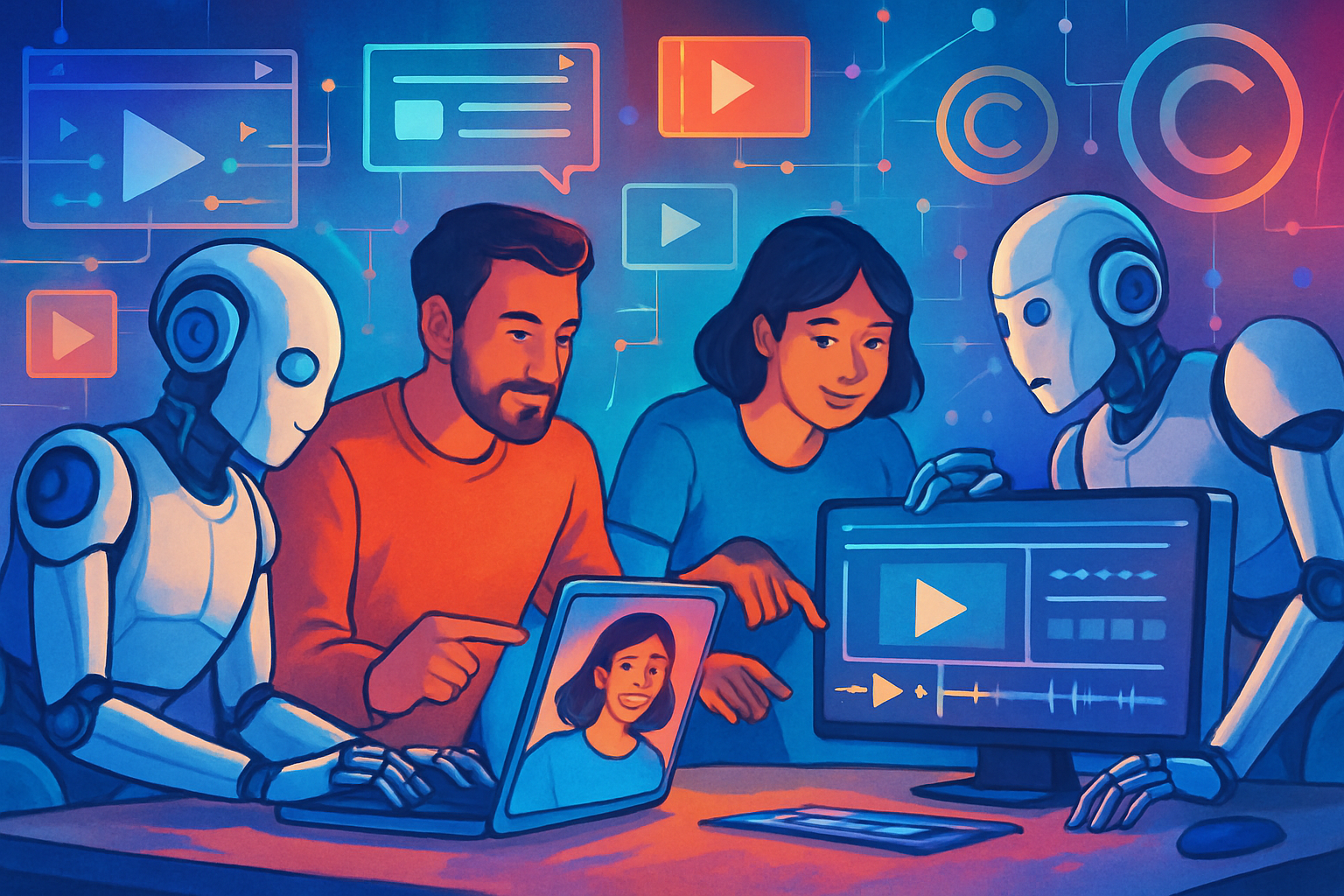
AI CERTS
2 months ago
Meta and OpenAI reshape AI social video feeds
Platforms Race Ahead Fast
Meta unveiled Vibes on 25 September 2025. The feature sits inside the Meta AI app and the meta.ai site, supplying endless AI clips with visible prompts. Users can remix scenes and send outputs directly to Instagram Reels. Meanwhile, OpenAI launched Sora as a product on 9 December 2024, then upgraded to Sora 2 plus a TikTok-style app on 30 September 2025.
Usage Metrics Signal Demand
OpenAI publishes tiered limits: Plus members receive capped 1080p generations, while Pro subscribers gain higher quotas and watermark-free downloads. Moreover, analysts predict compute costs will force aggressive monetization. Meta offers Vibes access free, hoping cross-posting boosts Reels inventory. Key early numbers include:- 1 million Sora iOS downloads in five days
- App Store rank #1 across 30 regions during launch week
- Short-form ad spend projected to grow 22% year-on-year
Copyright Storm Intensifies Quickly
Studios and agencies decried Sora 2’s initial opt-out stance. Motion Picture Association chairman Charles Rivkin said infringement “has proliferated.” In contrast, Sam Altman promised “granular control” and potential revenue sharing. Japanese content groups voiced similar objections regarding anime IP. Moreover, creators worry their original clips may train rival models without compensation, weakening the creator economy. Meta tries to calm fears by showing prompts and citing third-party partners like Midjourney for provenance. However, critics call many outputs “AI slop.” Consequently, litigation threats loom. Platforms must address ownership if they hope to sustain AI social video growth. The legal fight feeds into another technical struggle: ensuring source transparency.Watermarking Arms Race Grows
OpenAI embeds visible Sora watermarks plus C2PA metadata. Researchers removed both within days. Hany Farid noted this outcome was “predictable.” Meta applies similar marks, yet re-encoding strips metadata. Therefore, provenance remains fragile. Furthermore, bad actors can recirculate altered clips across multiple apps, muddying origin trails. Meanwhile, regulators worldwide debate mandatory disclosure rules for AI social video. Consequently, platforms explore complementary measures, including network-level detection and legal deterrence. These solutions will require time, budget, and policy alignment. Technical hurdles intersect with economic incentives, addressed next.Impact On Creator Economy
Generative feeds democratize production. Anyone can prompt dragons surfing Mars and post within seconds. Moreover, non-technical marketers prototype ads cheaply. However, easy output risks devaluing genuine craft and flooding timelines with repetitive material. In contrast, some influencers already blend prompts with live footage, creating hybrid storytelling. OpenAI’s cameo feature lets verified personalities license likenesses, opening new royalty channels. Consequently, the creator economy may split between prompt-engineers and traditional filmmakers. Importantly, professionals can stay competitive by upskilling. Many pursue the AI Writer™ certification to hone prompt design and policy fluency. These shifts reshape revenue models, explored next.Emerging Business Monetization Paths
Platforms will likely adopt several tactics:- Pay-per-generation credits for premium resolution
- Creator marketplaces selling prompt templates
- Advertising slots between AI social video clips
- Revenue share for licensed characters
Future Outlook And Recommendations
Analysts expect more labs, including Google and Stability AI, to launch rival feeds within a year. Meanwhile, lawmakers prepare tighter provenance mandates. Consequently, technical, legal, and commercial tracks will converge. Professionals should:- Audit content pipelines for potential IP clashes
- Experiment with prompt workflows to understand quality limits
- Monitor watermarking standards and upcoming regulations
- Pursue relevant certifications such as the AI Writer™ credential
Conclusion: Meta’s Vibes and OpenAI’s Sora feeds push short-form entertainment into a new algorithmic era. They deliver convenience, virality, and fresh monetization, yet also trigger copyright battles, provenance challenges, and quality concerns. Nevertheless, forward-thinking professionals can thrive by mastering prompt craft, tracking policy, and securing credentials. Consequently, seize the opportunity—start experimenting and pursue advanced training today.



